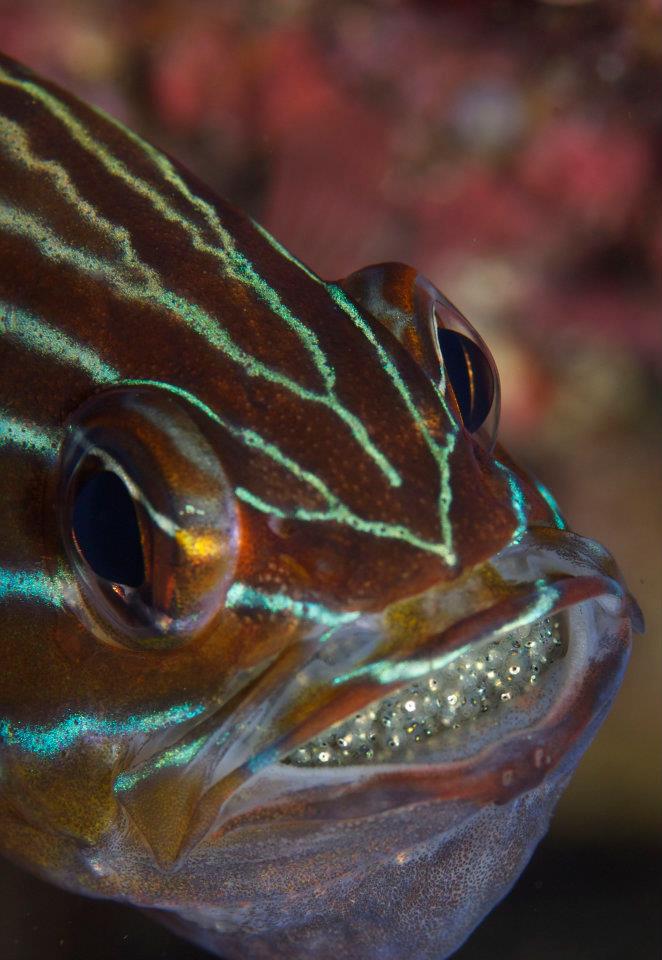Gobbleguts
The Cardinalfishes are a diverse family of small fishes with large mouths in which they brood their eggs (The name Gobbleguts was given as it sometimes appears the male is eating his babies!). The Gobbleguts has an almost translucent greyish-white body with a row of diagnostic black spots along the lateral line and a diagonal stripe behind the eye. They are relatively small fish, growing to a maximum size of 12 centimetres. It is the most abundant fish species in shallow seagrass beds around Perth, juveniles are particularly prevalent in the summer months.
The Gobbleguts have a huge geographical range, from the temperate south coast of Albany, WA to the tropical north of Arnhem Land, NT. They inhabit protected shallow inshore coastal and estuarine environments, usually mixed rock and sand reef, along seagrass beds and under jetties. And can also be found at suitable habitats at islands offshore. The Gobbleguts tend to be a nocturnal species and feed predominantly on benthic crustaceans, however as opportunistic feeders they may consume anything that they can fit into their large mouths.
During courtship and spawning, there is distinct pairing in the species. As mouthbrooders, the male is usually responsible for incubating the eggs. He may incubate between 50 and 230 fertilised, spherical eggs for approximately two weeks until hatching.
Occurrence at the Busselton Jetty
This species can be seen occasionally from the underwater observatory, though most often encountered during snorkeling underneath the jetty in small schools near the bottom.
